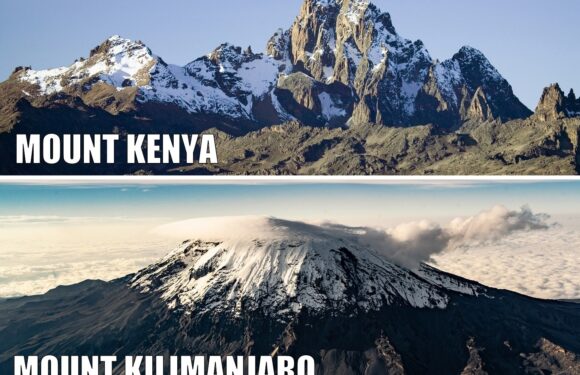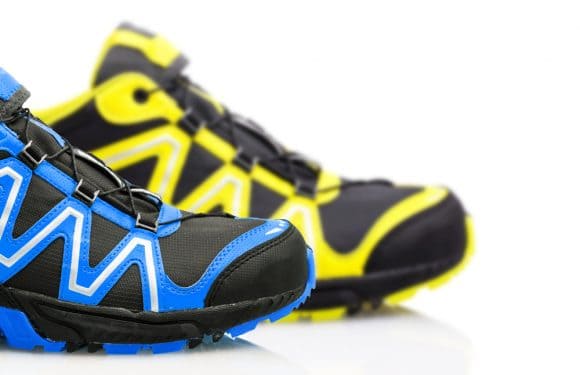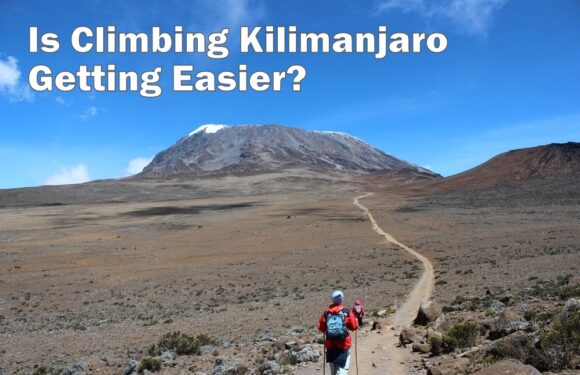Climbing Mount Kilimanjaro requires a lot of work.
To be successful, you need to maintain sufficient energy levels throughout the entire journey, especially near the top. This is no easy task considering this comes after many days of hiking and in a hypoxic environment. Here are 11 tips on how to improve your hiking endurance for climbing Kilimanjaro.
1. Train Right
We all know that training can increase endurance, but what is the right way to make the most improvements?
Most busy people tend to look for quick workouts that they can squeeze into their schedule. That means short training sessions at the gym, on the treadmill or on the track. However, research shows that the best way to train for endurance is to do low intensity exercise for longer time frames.
With regards to hiking endurance, we recommend doing dayhikes where you are out for several hours. Get used to being on your feet. Hike at a comfortable pace that you can sustain for a long time. Avoid doing energetic spurts followed by breaks. Your goal should be to be continuously active for a certain time or distance, not speed.
2. Lose Weight

Your body weight directly affects energy expenditure. Someone who is heavier requires more energy to move than someone who is lighter. Therefore, the heavier person has to do a greater amount of work to hike to the same spot.
If you are carrying extra body fat, shedding those extra pounds will improve your endurance. Maintaining a healthy body weight has a performance advantage because of the lower energy cost, greater speed and better agility.
3. Carry Less Gear
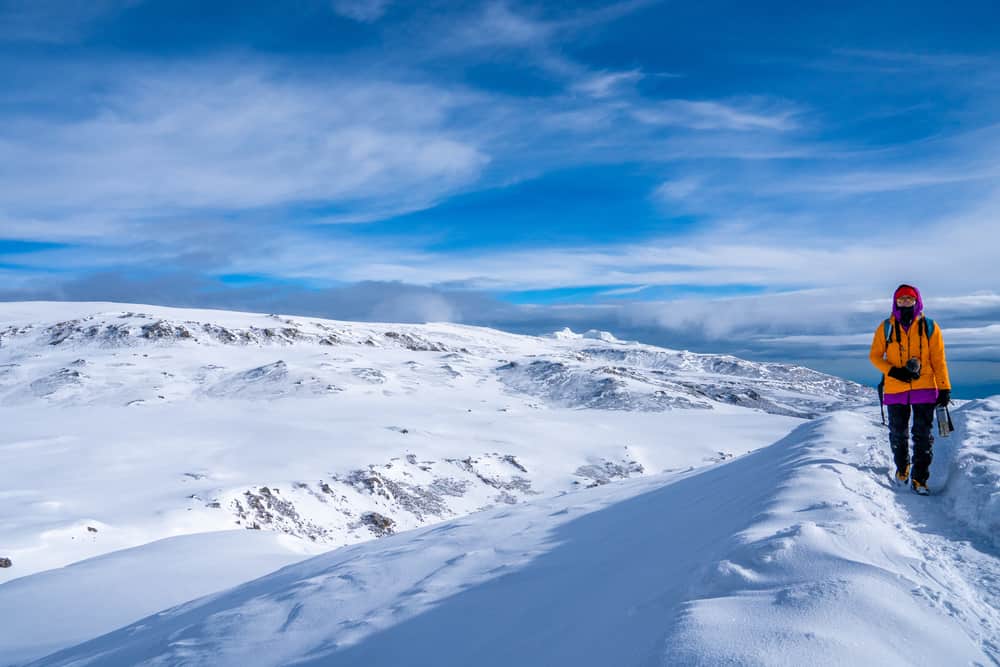
In addition to dropping some body weight, you can also drop your pack weight. One of the most common mistakes that a new backpacker will make is that he or she will carry too much gear. To be prepared is one thing. To be unnecessarily burdened with non essential things is another.
On Kilimanjaro, our porters will transport your gear from camp to camp. You only need to bring what you need between campsites. That typically means you want to have water, snacks, extra clothing and accessories. For most people it is around 15 lbs. of gear. Evaluate what you carry carefully and ditch the excess stuff.
Researchers found that for each 1% of your body weight carried in your pack, you are 6 seconds slower per mile. For instance, if you weigh 150 pounds, every 1.5 pounds of weight in your pack slows you by 6 seconds per mile. So carrying a 15 pound pack translates to being one minute slower per mile.
4. Use Lighter Shoes
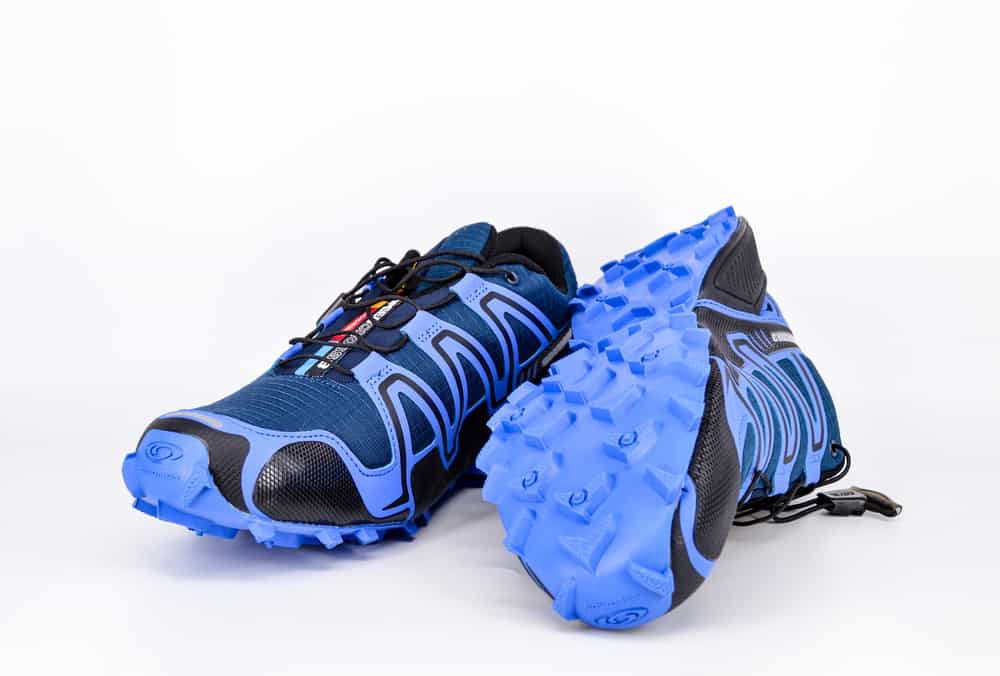
When shedding gear to lighten the load, the first area you should examine is what is on your feet. While lifting your footwear for a few steps doesn’t seem like much of a task, doing so for hours on end is a different story.
One pound on your feet equals five pounds on your back.
This backpacking rule of thumb has been tested by the military. According to a study by the U.S. Army Research Institute, it takes 4.7 to 6.4 times as much energy to hike when the weight is carried on the foot versus the backpack. So over the course of a multiday expedition like climbing Mount Kilimanjaro, shaving a pound or more off your footwear by wearing lighter boots or trail shoes results in tremendous energy savings.
5. Set a Comfortable Pace
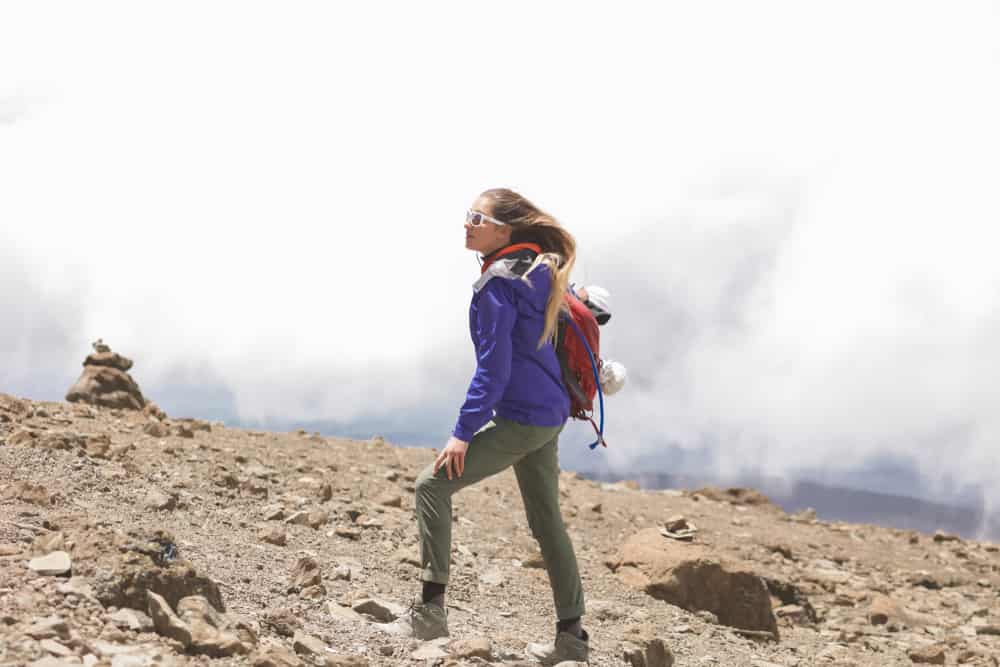
When endurance is the goal, the key is to set a sustainable pace. When one is feeling fresh, energetic and excited it is easy to start too quickly. Instead try the opposite. Start slowly to warm up and then settle into your regular pace. Most people hike between two to three miles per hour. Aim to finish the day at the same pace.
Starting and stopping repeatedly is not an efficient way to hike, nor is it the best way to build endurance. When you rest, the heart rate goes down. Upon re-starting, the heart rate spikes again. According to experts, training for endurance is most productive when you keep your heart rate mostly in the aerobic zone. This means training at 60%-80% of your maximum heart rate.
Your aerobic threshold is the intensity range at which the body switches from primarily relying on fat for fuel to primarily relying on carbs. Prolonged aerobic training below your aerobic threshold produces muscular adaptations that improve oxygen transport to the muscles, reduces the rate of lactate formation, improves the rate of lactate removal and increases energy production and utilization. These adaptations occur slowly over time.
The more time you spend on the trails, the easier it will be for you to establish and be aware of your ideal, sustainable hiking pace.
6. Use Trekking Poles
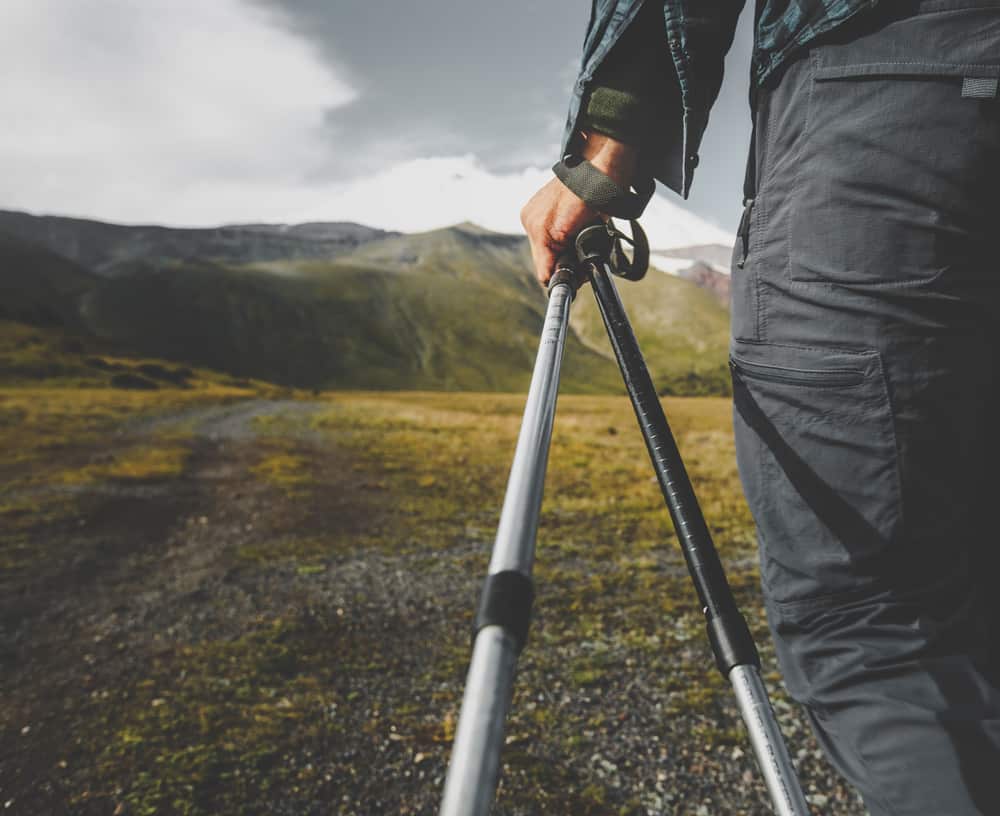
Some people frown upon trekking poles, believing they are for older people or those with knee problems. This is completely untrue.
Trekking poles make you a more efficient hiker. Walking for long distances obviously can strain the body. Your lower body takes the brunt of the load. By using trekking poles, you can take some of the burden into your upper body by putting weight into your arms. Though this may not seem consequential, over the long haul, it makes a big difference.
When the terrain is steep, the benefits become more apparent. On uphill sections, the poles help drive the body upwards. On downhill sections, the poles ease the impact on your knees, ankles, and feet. They also aid in balance which will save energy by reducing the work on your stabilizer muscles.
The bottom line is that poles recruit other muscles to share the work. By sharing the work, you stay fresher, longer.
7. Hydrate Accordingly

We all know that water is essential for basic human survival.
It makes up 70% of our body mass and is required by our body’s metabolic processes. By drinking water, the body simply functions better. The heart pumps better. The muscles work better. Both of these are important to your endurance. With sufficient water, your body can run smoothly and recover from activity much more effectively than if you were dehydrated.
Secondly, don’t forget about electrolytes. When you sweat, you not only lose water but also salt and minerals. These must also be replenished. That’s why we recommend using electrolytes on your climb to ensure that your electrolyte levels remain balanced.
8. Eat the Right Foods

When you hike, you burn calories. You need to refuel with food. But which foods are the best?
First, let’s be clear. The body uses carbohydrates, fats and proteins when you exercise. So nothing is wasted, including “junk foods”, high fat snacks and sugary drinks. However, the body can make energy out of carbohydrates faster than it can from fat or protein. Therefore, it is most efficient to eat a high carb diet while on Kilimanjaro. Not surprisingly, this is exactly what we feed our clients on the mountain.
You want to make sure you are eating enough food for the duration of your climb. Altitude can make you feel bloated and decrease your appetite. But try your best to keep consuming calories, and don’t skip meals.
9. Focus on the Positives

“Fatigue Makes Cowards of Us All.” – Vince Lombardi
While climbing Mount Kilimanjaro, you are going to be tested. Scaling a high altitude peak is a physical and mental challenge. Because when you start to feel tired, negative thoughts fill your mind. These doubts and discouragement are natural, but if you let them take over, you may start to walk slower, lag behind, and be tempted to quit.
Instead, think positively. Focus on all of the things going right. These can include: you are acclimatized to the altitude, you are well hydrated, you’re not very sore, you have eaten well, you slept several hours, you don’t feel sick. You can be grateful for the mild weather, the warm gear, the training you put in, how far you have come, the support from the guides or friends, and the experience as a whole. Use anything and everything as motivation to continue.
Remind yourself why you came. Tell yourself you are strong. Imagine yourself standing on the summit. Recall all the challenges in your life that you have overcome and believe that this mountain is no different. Use your optimism to energize you.
10. Use the Rest Step
Mountaineers have a technique of ascending steep grades known as the rest step. Basically what the rest step allows is for you to rest for a moment in between each step. This is accomplished by taking slow steps and pausing when your back leg is stacked.
With normal walking, the forward and upward progress is smooth and consistent. But with the rest step, there is an obvious break and rhythm in the movement.
Here’s how to perform the rest step. When you take a step forward and upward, lock the knee of the back leg. Place all your weight on the back leg for a second or so before continuing on. The back leg in essence becomes a temporary walking stick or trekking pole. By doing the rest step, you save energy and thus, enhance your endurance.
11. Trail Run
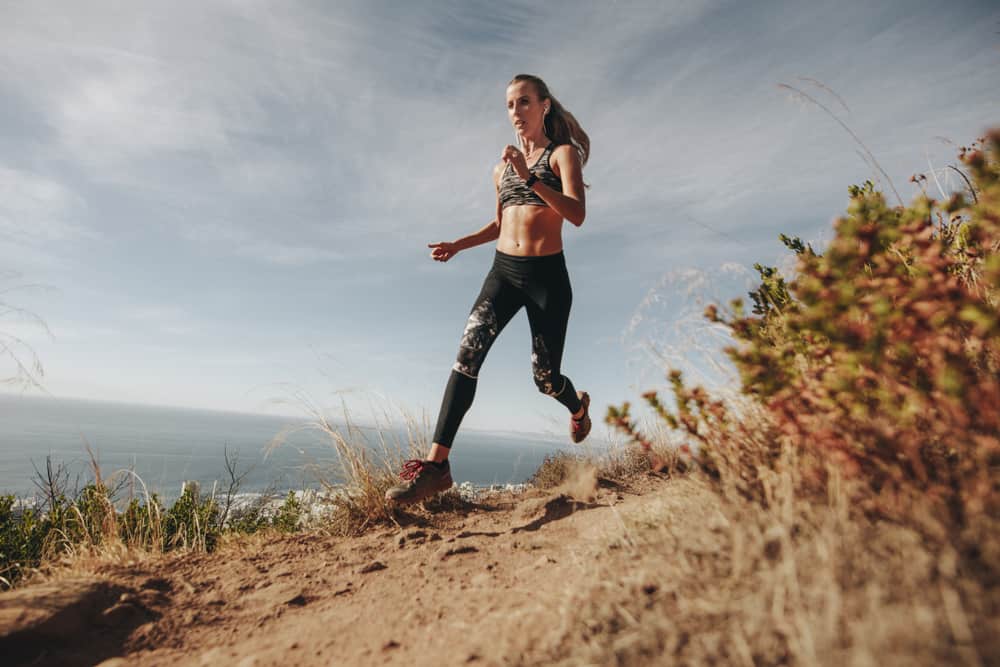
When it comes to aerobic activities, running is one of the best exercises. Compared to walking or hiking, running is much less efficient. It demands more from your body – more oxygen, more blood, and more of your muscles. Throw in some natural terrain and you’ve got quite a workout on your hands (or should we say feet?). Trail running’s constant variety increases your cardiovascular endurance and provides better strength training benefits.
If you really want to improve your hiking endurance, add in some trail running. It provides a more intense and different workout which will help boost your hiking endurance and work different muscle groups.
As with any training, you want to ease into trail running. You are more likely to get injured while trail running than hiking because it creates more impact and requires more skill. Start with easier trails, slower speeds and shorter distances.
—–
That wraps up our list for 11 ways to boost your hiking endurance. If you can incorporate these tips into your preparation and your time on the mountain, you’ll have more stamina to tackle Africa’s highest peak.






















































